Gluten digestion
Gluten is the generic term used for the storage protein in grains. The specific protein found in wheat, rye and barley is the toxic substance that causes an immune response in individuals with celiac disease.
The storage protein gluten is composed of different protein fractions, which are made up of different peptides in each cereal. Depending on the protein fraction, toxic peptides occur during degradation in the body, which lead to changes in the intestine of coeliac disease patients.
The storage protein gluten is composed of different protein fractions, which are made up of different peptides in each cereal. Depending on the protein fraction, toxic peptides occur during degradation in the body, which lead to changes in the intestine of coeliac disease patients.
Gluten is the generic term used for the family of storage proteins found in wheat rye and barley [1]. The protein is found in the endosperm of the grain seed. The protein content is approximately 5 - 10% by weight of the dry grain matter and thus around 80% of the grain protein. Insert diagram of plant kingdoms that identifies the tribes of grains and therefore identifies those that are gluten containing and those that are not.
Each grain has its own specific sequence of gliadins and glutenins which consist of hundreds of specific components and amino acid sequences. The specific protein components and amino acid sequences make it possible to identify the grain and even the cultivated strain of the grain. The amino acid sequencing is the specific grains own fingerprint. These strands of amino acids with their specific make up and sequencing are the building blocks of proteins in general and grain proteins specifically.
Composition of gluten
The proteins that are toxic to individuals with celiac disease are rich in the amino acids proline and glutamine. This group of toxic proteins are collectively called prolamins. Each grain has its own unique prolamin fractions; gliadin (wheat), secalin (rye), and hordein (barley). The prolamin fraction consists of two sub groups gliadins, which are alcohol soluble, and glutenins which are not soluble in alcohol.Each grain has its own specific sequence of gliadins and glutenins which consist of hundreds of specific components and amino acid sequences. The specific protein components and amino acid sequences make it possible to identify the grain and even the cultivated strain of the grain. The amino acid sequencing is the specific grains own fingerprint. These strands of amino acids with their specific make up and sequencing are the building blocks of proteins in general and grain proteins specifically.
Digestion of Proteins
In normal digestion these long strands of protein are broken down by digestive enzymes. The enzymes cleave or break off groups of amino acids called peptides. The majority of these peptides can be further broken down, absorbed through the intestine and then transported and used in the body. However, gluten cannot be broken down by the digestive enzymes. There are three specific gluten peptides (alpha gliadin) that can trigger a T-cell response. Of the three there is one particular gliadin peptide with a specific 33 amino acid sequence that is responsible for the aggressive immune response in the gut.
Prolamins are rich in proline and glutamine, two amino acids that are difficult to digest. Neither proline nor glutamine are classified as essential amino acids. It is the high proline and glutamine content in gluten that prevents the proteins from being completely broken down by the digestive enzymes. The long-term result of this is that toxic oligopeptides, proteins with up to ten amino acids, are present in the small intestine. Proline is degraded using an oxidase, which converts proline into glutamic acid using glutamate-gamma-semialdehyde. The glutamic acid in turn must be converted into glutamine, so that it can be transported to the brain, where it is necessary for protein synthesis.
Prolamins are rich in proline and glutamine, two amino acids that are difficult to digest. Neither proline nor glutamine are classified as essential amino acids. It is the high proline and glutamine content in gluten that prevents the proteins from being completely broken down by the digestive enzymes. The long-term result of this is that toxic oligopeptides, proteins with up to ten amino acids, are present in the small intestine. Proline is degraded using an oxidase, which converts proline into glutamic acid using glutamate-gamma-semialdehyde. The glutamic acid in turn must be converted into glutamine, so that it can be transported to the brain, where it is necessary for protein synthesis.
Examples of toxic oligopeptides
Peptides are identified by their specific amino acid sequences. Letters of the alphabet are used to code or label the specific amino acids.
- Peptides with the amino-acid sequence LGQQQPFPPQQPY are referred to as "toxic peptides" and cause cell clumping, programmed cell death, new arrangement of the structural protein actin and lead to morphological changes in the intestine of celiac patients without immunogenicity for T-cells.
- Peptides with the amino-acid sequence QLQPFPQPQLPY are referred to as "T-cell immunogenic peptides", do not lead to any change in the intestine of celiac disease patients.
References
- Holmes, G, Catassi C, Fasano A. Fast Facts: Celiac Disease 2009 Health Press Oxford UK
Further information on this topic
Professional articles
5
Show all
Presentations
8
Show all
Studies
4
Show all

Gut Microbiota in Health and Disease
Ms Wilson’s article reviews the influence of the environment on the gut microbiome and discusses potential dietary avenues to improve it.
>> Read more... <<<
>> Read more... <<<

The influence of the microbiome on gluten-related diseases
The increasing prevalence of food intolerances, especially in relation to certain carbohydrates, represents a global health problem. Moreover, intolerance of gluten and gluten-bound substances, e.g. amylase-trypsin inhibitor (ATI) is blamed for intestinal (e.g. meteorism, pain, constipation, diarrhea) and extra intestinal symptoms (e.g. fatigue, headaches, joint pain, skin irritation) in affected patients. The pathogenesis of food intolerances is blamed on factors such as changes in the composition of the intestinal flora and its influence on mucous membrane immune tolerance.
>> Read more... <<<
>> Read more... <<<

The importance of the microbiota in the pathogenesis and treatment of celiac disease
The composition of the gut microbiome is influenced by many factors. The microbiota may also be a key influencer in overall health and disease outcomes.
>> Read more... <<<
>> Read more... <<<

Analysis of dietary patterns in people with and without celiac disease
How balanced is the diet of celiac disease patients? In this article, Nicoletta Pellegrini explores this topic in her current study.
>> Read more... <<<
>> Read more... <<<

Dietary compliance and the gluten-free diet
Adherence to the gluten-free diet is not always easy. There are various factors that influence the dietary behavior of individuals with celiac disease.
>> Read more... <<<
>> Read more... <<<

Gut Microbiota in Health and Disease
Ms Wilson’s article reviews the influence of the environment on the gu...

The influence of the microbiome on gluten-related diseases
The increasing prevalence of food intolerances, especially in relation...

The importance of the microbiota in the pathogenesis and treatment of celiac disease
The composition of the gut microbiome is influenced by many factors. T...

Analysis of dietary patterns in people with and without celiac disease
How balanced is the diet of celiac disease patients? In this article, ...

Dietary compliance and the gluten-free diet
Adherence to the gluten-free diet is not always easy. There are variou...
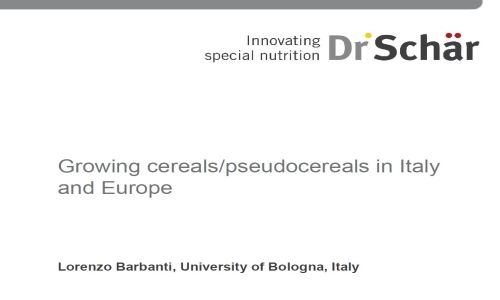
Growing cereals/pseudocereals in Italy and Europe (2013)
Lorenzo Barbanti
Assistant Professor
DipSA (Department of Agricultural Sciences)
University of Bologna, Italy
International Symposium "10 years of research in gluten-free food and future prospects", 30.11.2013, AREA Science Park, Trieste (Italy)
Assistant Professor
DipSA (Department of Agricultural Sciences)
University of Bologna, Italy
International Symposium "10 years of research in gluten-free food and future prospects", 30.11.2013, AREA Science Park, Trieste (Italy)
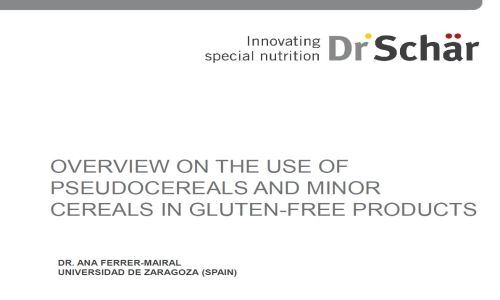
Overview on the use of pseudocereals and minor cereals in gluten - free products (2013)
Ana Ferrer-Mairal
Associate Professor in Food Technology
University of Zaragoza, Spain
International Symposium "10 years of research in gluten-free food and future prospects", 30.11.2013, AREA Science Park, Trieste (Italy)
Associate Professor in Food Technology
University of Zaragoza, Spain
International Symposium "10 years of research in gluten-free food and future prospects", 30.11.2013, AREA Science Park, Trieste (Italy)
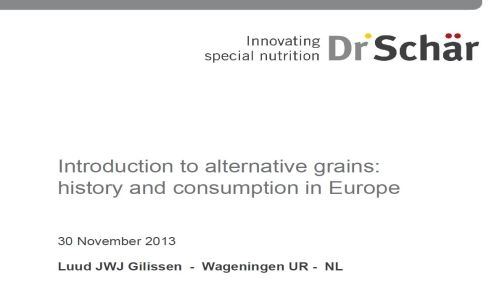
Introduction to alternative grains: history and consumption in Europe (2013)
Luud J.W.J. Gilissen
Senior scientist at Plant Research International (PRI) of Wageningen UR, The Netherlands
International Symposium "10 years of research in gluten-free food and future prospects", 30.11.2013, AREA Science Park, Trieste (Italy)
Senior scientist at Plant Research International (PRI) of Wageningen UR, The Netherlands
International Symposium "10 years of research in gluten-free food and future prospects", 30.11.2013, AREA Science Park, Trieste (Italy)
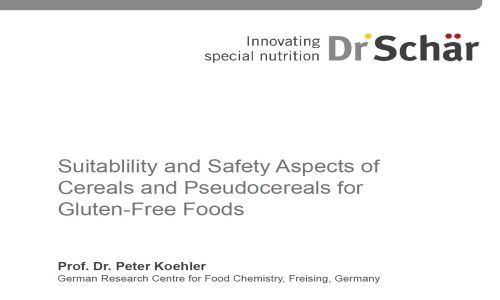
Suitability and safety aspects of cereals and pseudocereals for gluten-free foods (2013)
Peter Koehler
Professor for Food Chemistry
Technical University of Munich, Germany
Vice director of the German Research Centre for Food Chemistry
International Symposium "10 years of research in gluten-free food and future prospects", 30.11.2013, AREA Science Park, Trieste (Italy)
Professor for Food Chemistry
Technical University of Munich, Germany
Vice director of the German Research Centre for Food Chemistry
International Symposium "10 years of research in gluten-free food and future prospects", 30.11.2013, AREA Science Park, Trieste (Italy)
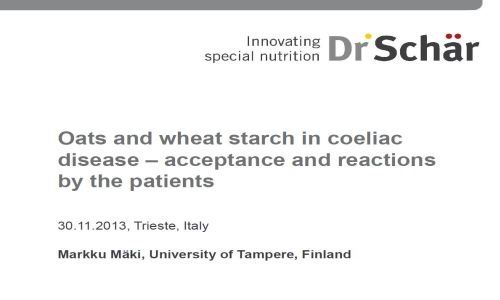
Oats and wheat starch in coeliac disease – acceptance and reactions by patients (2013)
Markku Mäki
Pediatric gastroenterologist and full Professor of Pediatrics at the University of Tampere, Finland
International Symposium "10 years of research in gluten-free food and future prospects", 30.11.2013, AREA Science Park, Trieste (Italy)
Pediatric gastroenterologist and full Professor of Pediatrics at the University of Tampere, Finland
International Symposium "10 years of research in gluten-free food and future prospects", 30.11.2013, AREA Science Park, Trieste (Italy)
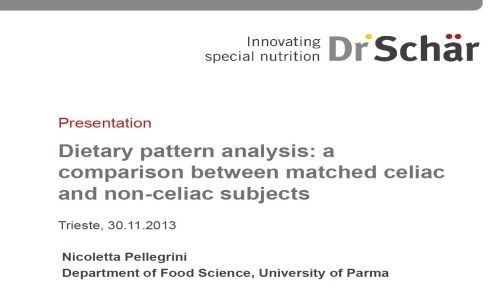
Dietary pattern analysis: a comparison between matched celiac and non-celiac subjects (2013)
Nicoletta Pellegrini
Associate Professor
Department of Food Science, University of Parma, Italy
International Symposium "10 years of research in gluten-free food and future prospects", 30.11.2013, AREA Science Park, Trieste (Italy)
Associate Professor
Department of Food Science, University of Parma, Italy
International Symposium "10 years of research in gluten-free food and future prospects", 30.11.2013, AREA Science Park, Trieste (Italy)
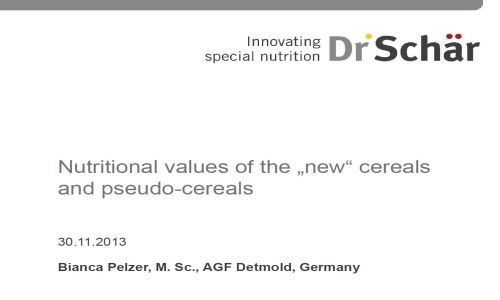
Nutritional values of the „new“ cereals and pseudocereals (2013)
Bianca Pelzer
Association of Cereal Research (AGF)
Detmold, Germany
International Symposium "10 years of research in gluten-free food and future prospects", 30.11.2013, AREA Science Park, Trieste (Italy)
Association of Cereal Research (AGF)
Detmold, Germany
International Symposium "10 years of research in gluten-free food and future prospects", 30.11.2013, AREA Science Park, Trieste (Italy)
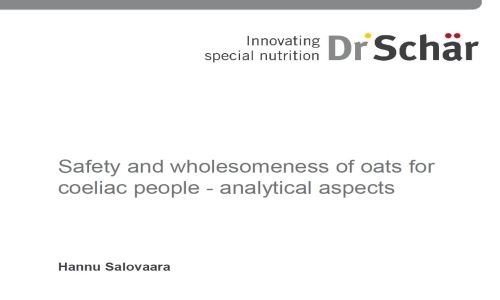
Safety and wholesomeness of oats for coeliac people - analytical aspects (2013)
Hannu Salovaara
Head of Food Technology division
Food and Environmental Sciences, University of Helsinki, Finland
International Symposium "10 years of research in gluten-free food and future prospects", 30.11.2013, AREA Science Park, Trieste (Italy)
Head of Food Technology division
Food and Environmental Sciences, University of Helsinki, Finland
International Symposium "10 years of research in gluten-free food and future prospects", 30.11.2013, AREA Science Park, Trieste (Italy)

Growing cereals/pseudocereals in Italy and Europe (2013)
Lorenzo Barbanti
Assistant Professor
DipSA (Department of Agricultur...

Overview on the use of pseudocereals and minor cereals in gluten - free products (2013)
Ana Ferrer-Mairal
Associate Professor in Food Technology
University ...

Introduction to alternative grains: history and consumption in Europe (2013)
Luud J.W.J. Gilissen
Senior scientist at Plant Research International...

Suitability and safety aspects of cereals and pseudocereals for gluten-free foods (2013)
Peter Koehler
Professor for Food Chemistry
Technical University of M...

Oats and wheat starch in coeliac disease – acceptance and reactions by patients (2013)
Markku Mäki
Pediatric gastroenterologist and full Professor of Pediat...

Dietary pattern analysis: a comparison between matched celiac and non-celiac subjects (2013)
Nicoletta Pellegrini
Associate Professor
Department of Food Science,...

Nutritional values of the „new“ cereals and pseudocereals (2013)
Bianca Pelzer
Association of Cereal Research (AGF)
Detmold, Germany
...

Safety and wholesomeness of oats for coeliac people - analytical aspects (2013)
Hannu Salovaara
Head of Food Technology division
Food and Environmen...

Glycaemic index of some commercial gluten-free foods
ABSTRACT
Purpose
Gluten-free products present major challenges for the food industry in terms of organoleptic, technological and nutritional characteristics. The absence of gluten has been shown to affect starch digestibility, thus increasing the postprandial glycaemic response. However, in recent years, gluten-free technologies have been improved, thus possibly modifying this quality parameter. We investigated the glycaemic index (GI) of 10 commercial foods aiming to update the GI values of the most common gluten-free products consumed in Italy.
Methods
The in vivo GI was evaluated for six bakery products and four types of pasta. The postprandial glucose response was obtained in two groups with 10 healthy volunteers each.
Results
The overall GI values ranged from 37.5 for breakfast biscuits to 66.7 for puffed multigrain cake. Breads and pasta had GI values consistently lower than those previously reported in the literature.
Conclusion
The present study showed that several commercial GF products exhibited low and medium GI values, not confirming the previous observations on the high GI of GF. However, considering the multiple formulations and processes for preparation of these products, further studies are recommended.
Resource: Eur J Nutr. 2014 Oct 17.
Francesca Scazzina • Margherita Dall’Asta • Nicoletta Pellegrini • Furio Brighenti
Purpose
Gluten-free products present major challenges for the food industry in terms of organoleptic, technological and nutritional characteristics. The absence of gluten has been shown to affect starch digestibility, thus increasing the postprandial glycaemic response. However, in recent years, gluten-free technologies have been improved, thus possibly modifying this quality parameter. We investigated the glycaemic index (GI) of 10 commercial foods aiming to update the GI values of the most common gluten-free products consumed in Italy.
Methods
The in vivo GI was evaluated for six bakery products and four types of pasta. The postprandial glucose response was obtained in two groups with 10 healthy volunteers each.
Results
The overall GI values ranged from 37.5 for breakfast biscuits to 66.7 for puffed multigrain cake. Breads and pasta had GI values consistently lower than those previously reported in the literature.
Conclusion
The present study showed that several commercial GF products exhibited low and medium GI values, not confirming the previous observations on the high GI of GF. However, considering the multiple formulations and processes for preparation of these products, further studies are recommended.
Resource: Eur J Nutr. 2014 Oct 17.
Francesca Scazzina • Margherita Dall’Asta • Nicoletta Pellegrini • Furio Brighenti

Diets that differ in their FODMAP content alter the colonic luminal microenvironment.
Abstract
OBJECTIVE:
A low FODMAP (Fermentable Oligosaccharides, Disaccharides, Monosaccharides And Polyols) diet reduces symptoms of IBS, but reduction of potential prebiotic and fermentative effects might adversely affect the colonic microenvironment. The effects of a low FODMAP diet with a typical Australian diet on biomarkers of colonic health were compared in a single-blinded, randomised, cross-over trial.
DESIGN:
Twenty-seven IBS and six healthy subjects were randomly allocated one of two 21-day provided diets, differing only in FODMAP content (mean (95% CI) low 3.05 (1.86 to 4.25) g/day vs Australian 23.7 (16.9 to 30.6) g/day), and then crossed over to the other diet with ≥21-day washout period. Faeces passed over a 5-day run-in on their habitual diet and from day 17 to day 21 of the interventional diets were pooled, and pH, short-chain fatty acid concentrations and bacterial abundance and diversity were assessed.
RESULTS:
Faecal indices were similar in IBS and healthy subjects during habitual diets. The low FODMAP diet was associated with higher faecal pH (7.37 (7.23 to 7.51) vs 7.16 (7.02 to 7.30); p=0.001), similar short-chain fatty acid concentrations, greater microbial diversity and reduced total bacterial abundance (9.63 (9.53 to 9.73) vs 9.83 (9.72 to 9.93) log10 copies/g; p<0.001) compared with the Australian diet. To indicate direction of change, in comparison with the habitual diet the low FODMAP diet reduced total bacterial abundance and the typical Australian diet increased relative abundance for butyrate-producing Clostridium cluster XIVa (median ratio 6.62; p<0.001) and mucus-associated Akkermansia muciniphila (19.3; p<0.001), and reduced Ruminococcus torques.
CONCLUSIONS:
Diets differing in FODMAP content have marked effects on gut microbiota composition. The implications of long-term reduction of intake of FODMAPs require elucidation.
Resource: Gut. 2014 Jul 12. pii: gutjnl-2014-307264. doi: 10.1136/gutjnl-2014-307264. [Epub ahead of print]
Halmos EP, Christophersen CT, Bird AR, Shepherd SJ, Gibson PR, Muir JG.
OBJECTIVE:
A low FODMAP (Fermentable Oligosaccharides, Disaccharides, Monosaccharides And Polyols) diet reduces symptoms of IBS, but reduction of potential prebiotic and fermentative effects might adversely affect the colonic microenvironment. The effects of a low FODMAP diet with a typical Australian diet on biomarkers of colonic health were compared in a single-blinded, randomised, cross-over trial.
DESIGN:
Twenty-seven IBS and six healthy subjects were randomly allocated one of two 21-day provided diets, differing only in FODMAP content (mean (95% CI) low 3.05 (1.86 to 4.25) g/day vs Australian 23.7 (16.9 to 30.6) g/day), and then crossed over to the other diet with ≥21-day washout period. Faeces passed over a 5-day run-in on their habitual diet and from day 17 to day 21 of the interventional diets were pooled, and pH, short-chain fatty acid concentrations and bacterial abundance and diversity were assessed.
RESULTS:
Faecal indices were similar in IBS and healthy subjects during habitual diets. The low FODMAP diet was associated with higher faecal pH (7.37 (7.23 to 7.51) vs 7.16 (7.02 to 7.30); p=0.001), similar short-chain fatty acid concentrations, greater microbial diversity and reduced total bacterial abundance (9.63 (9.53 to 9.73) vs 9.83 (9.72 to 9.93) log10 copies/g; p<0.001) compared with the Australian diet. To indicate direction of change, in comparison with the habitual diet the low FODMAP diet reduced total bacterial abundance and the typical Australian diet increased relative abundance for butyrate-producing Clostridium cluster XIVa (median ratio 6.62; p<0.001) and mucus-associated Akkermansia muciniphila (19.3; p<0.001), and reduced Ruminococcus torques.
CONCLUSIONS:
Diets differing in FODMAP content have marked effects on gut microbiota composition. The implications of long-term reduction of intake of FODMAPs require elucidation.
Resource: Gut. 2014 Jul 12. pii: gutjnl-2014-307264. doi: 10.1136/gutjnl-2014-307264. [Epub ahead of print]
Halmos EP, Christophersen CT, Bird AR, Shepherd SJ, Gibson PR, Muir JG.
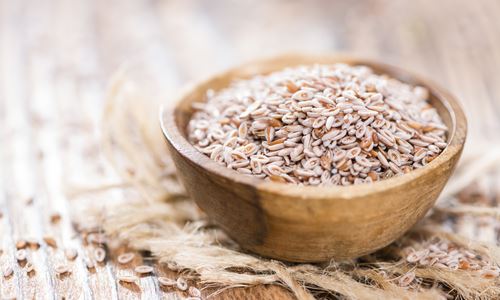
Psyllium as a substitute for gluten in pastas
Abstract
The aim of the present study was to evaluate the effect of replacing gluten in favor of psyllium in pasta’s characteristics. This study takes an exploratory and quantitative approach and was sub-divided into four steps: selection and development of recipes and chemical and sensorial analysis. Modified samples of the pasta presented 100.0% of acceptance for individuals with celiac disease and up to 94.0% for individuals without celiac disease. The most affected characteristics were odor and texture. In terms of chemical composition, reduction of energy value was 26.5% and of proportional fat was 85.4% before being cooked. Substituting wheat flour for a mixture of gluten-free flours with psyllium did not alter preference or acceptability of modified products in relation to standardized ones and amplified feeding options for celiac disease patients. Thus, there were no damages in sensorial characteristics of these products.
Resource: Journal of Culinary Science & Technology Volume 12, Issue 2, 2014
Renata Puppin Zandonadi, Raquel Braz Assunção Botelho and Wilma Maria Coelho Araújo
The aim of the present study was to evaluate the effect of replacing gluten in favor of psyllium in pasta’s characteristics. This study takes an exploratory and quantitative approach and was sub-divided into four steps: selection and development of recipes and chemical and sensorial analysis. Modified samples of the pasta presented 100.0% of acceptance for individuals with celiac disease and up to 94.0% for individuals without celiac disease. The most affected characteristics were odor and texture. In terms of chemical composition, reduction of energy value was 26.5% and of proportional fat was 85.4% before being cooked. Substituting wheat flour for a mixture of gluten-free flours with psyllium did not alter preference or acceptability of modified products in relation to standardized ones and amplified feeding options for celiac disease patients. Thus, there were no damages in sensorial characteristics of these products.
Resource: Journal of Culinary Science & Technology Volume 12, Issue 2, 2014
Renata Puppin Zandonadi, Raquel Braz Assunção Botelho and Wilma Maria Coelho Araújo
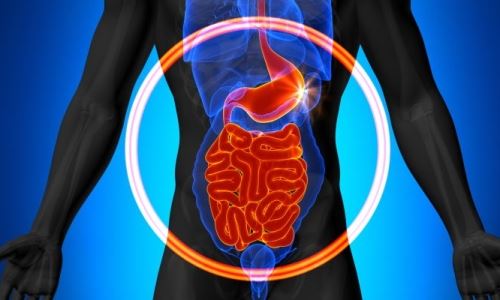
A Diet Low in FODMAPs Reduces Symptoms of Irritable Bowel Syndrome
Abstract
Background & Aims: A diet low in fermentable oligosaccharides, disaccharides, monosaccharides, and polyols (FODMAPs) often is used to manage functional gastrointestinal symptoms in patients with irritable bowel syndrome (IBS), yet there is limited evidence of its efficacy, compared with a normal Western diet. We investigated the effects of a diet low in FODMAPs compared with an Australian diet, in a randomized, controlled, single-blind, cross-over trial of patients with IBS.
Methods: In a study of 30 patients with IBS and 8 healthy individuals (controls, matched for demographics and diet), we collected dietary data from subjects for 1 habitual week. Participants then randomly were assigned to groups that received 21 days of either a diet low in FODMAPs or a typical Australian diet, followed by a washout period of at least 21 days, before crossing over to the alternate diet. Daily symptoms were rated using a 0- to 100-mm visual analogue scale. Almost all food was provided during the interventional diet periods, with a goal of less than 0.5 g intake of FODMAPs per meal for the low-FODMAP diet. All stools were collected from days 17–21 and assessed for frequency, weight, water content, and King's Stool Chart rating.
Results: Subjects with IBS had lower overall gastrointestinal symptom scores (22.8; 95% confidence interval, 16.7–28.8 mm) while on a diet low in FODMAPs, compared with the Australian diet (44.9; 95% confidence interval, 36.6–53.1 mm; P < .001) and the subjects' habitual diet. Bloating, pain, and passage of wind also were reduced while IBS patients were on the low-FODMAP diet. Symptoms were minimal and unaltered by either diet among controls. Patients of all IBS subtypes had greater satisfaction with stool consistency while on the low-FODMAP diet, but diarrhea-predominant IBS was the only subtype with altered fecal frequency and King's Stool Chart scores.
Conclusions: In a controlled, cross-over study of patients with IBS, a diet low in FODMAPs effectively reduced functional gastrointestinal symptoms. This high-quality evidence supports its use as a first-line therapy.
Resource: Gastroenterology Volume 146, Issue 1 , Pages 67-75.e5, January 2014
Emma P. Halmos, Victoria A. Power, Susan J. Shepherd, Peter R. Gibson, Jane G. Muir
Background & Aims: A diet low in fermentable oligosaccharides, disaccharides, monosaccharides, and polyols (FODMAPs) often is used to manage functional gastrointestinal symptoms in patients with irritable bowel syndrome (IBS), yet there is limited evidence of its efficacy, compared with a normal Western diet. We investigated the effects of a diet low in FODMAPs compared with an Australian diet, in a randomized, controlled, single-blind, cross-over trial of patients with IBS.
Methods: In a study of 30 patients with IBS and 8 healthy individuals (controls, matched for demographics and diet), we collected dietary data from subjects for 1 habitual week. Participants then randomly were assigned to groups that received 21 days of either a diet low in FODMAPs or a typical Australian diet, followed by a washout period of at least 21 days, before crossing over to the alternate diet. Daily symptoms were rated using a 0- to 100-mm visual analogue scale. Almost all food was provided during the interventional diet periods, with a goal of less than 0.5 g intake of FODMAPs per meal for the low-FODMAP diet. All stools were collected from days 17–21 and assessed for frequency, weight, water content, and King's Stool Chart rating.
Results: Subjects with IBS had lower overall gastrointestinal symptom scores (22.8; 95% confidence interval, 16.7–28.8 mm) while on a diet low in FODMAPs, compared with the Australian diet (44.9; 95% confidence interval, 36.6–53.1 mm; P < .001) and the subjects' habitual diet. Bloating, pain, and passage of wind also were reduced while IBS patients were on the low-FODMAP diet. Symptoms were minimal and unaltered by either diet among controls. Patients of all IBS subtypes had greater satisfaction with stool consistency while on the low-FODMAP diet, but diarrhea-predominant IBS was the only subtype with altered fecal frequency and King's Stool Chart scores.
Conclusions: In a controlled, cross-over study of patients with IBS, a diet low in FODMAPs effectively reduced functional gastrointestinal symptoms. This high-quality evidence supports its use as a first-line therapy.
Resource: Gastroenterology Volume 146, Issue 1 , Pages 67-75.e5, January 2014
Emma P. Halmos, Victoria A. Power, Susan J. Shepherd, Peter R. Gibson, Jane G. Muir

Glycaemic index of some commercial gluten-free foods
ABSTRACT
Purpose
Gluten-free products present major challenges for...

Diets that differ in their FODMAP content alter the colonic luminal microenvironment.
Abstract
OBJECTIVE:
A low FODMAP (Fermentable Oligosaccharides, Di...

Psyllium as a substitute for gluten in pastas
Abstract
The aim of the present study was to evaluate the effect of...

A Diet Low in FODMAPs Reduces Symptoms of Irritable Bowel Syndrome
Abstract
Background & Aims: A diet low in fermentable oligosacchari...
www.drschaer-institute.com

